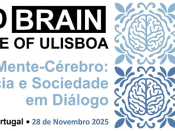
Por Isabelle Landrieu (Lille University, Inserm, Institute Pasteur de Lille Research Department U1167).
In neurodegenerative diseases, it is hypothesized that aggregation-prone proteins may have prion-like properties. This hypothesis refers to the ability of certain neuronal proteins to misfold and propagate this misfolding by seeding soluble homotypic protein aggregates in a manner similar to prions. This ability is associated with transcellular propagation of proteins along functional brain networks. This process can lead to the formation of pathological protein aggregates, such as tau filaments in neurofibrillary tangles (NFTs), commonly observed in diseases such as Alzheimer's disease (AD) and other tauopathies. In this context, a family of novel single-domain antibody fragments, or VHHs (variable domain of the heavy-chain of the heavy-chain only antibodies), directed against tau protein have been selected to develop new research tools and evaluate their therapeutic potential to inhibit tau aggregation, seeding and/or spreading capabilities.



















